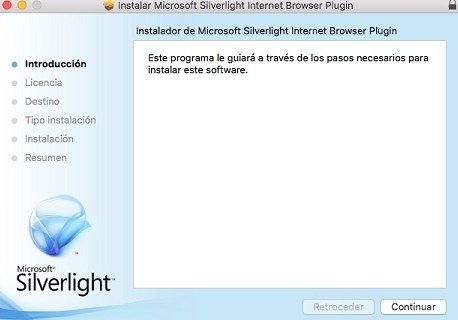
- Silverlight 2.0.31005.0 how to#
- Silverlight 2.0.31005.0 install#
- Silverlight 2.0.31005.0 driver#
- Silverlight 2.0.31005.0 code#
Logic is also always required when debugging any issue. Knowledge of debugging is required before you can use a debugging tool effectively.
Silverlight 2.0.31005.0 how to#
As I've already mentioned, no tool will ever replace the need for the human to know how to use the tool or how to interpret the information provided by the tool. Therefore, instead of writing a series, I'm going to refer you to a series of places where you can easily learn all about WinDBG and, more importantly, advanced debugging and system internals.īefore you go diving into a list of resources, though, you need to realize that WinDBG, like Visual Studio's built-in, toned-down debugger, is only a tool. As I say regularly, if you ever try to fix something without understanding it, you are, at best, doing little more than hacking. Thus, remember this: your ability to debug something is directly proportional to your knowledge of the system. Don't think that learning some tool will help you to effectively debug serious problems. Second, 90%+ of advanced debugging is all about understanding internals something that takes many hours of study over many months. Just attach your debugger to the unmanaged browser to debug the managed Silverlight application.Īt this point you might expect me to announce that I'm going to do some long series on how to effectively use SOS, but that's not the case for two reasons: first, I'm not going to dump out a series of screen shots when many others have done this already.
Silverlight 2.0.31005.0 install#
As it turns out, when you install Silverlight, sos.dll is installed in your %ProgramFiles%\Microsoft Silverlight\5.0\sos.dll folder (or on a 64-bit system, %ProgramFiles(x86)%\Microsoft Silverlight\5.0\sos.dll).
Silverlight 2.0.31005.0 code#
NET code in unmanaged code, you can also use WinDBG to debug Silverlight code. In addition to being able to debug unmanaged code. So when you pause a process and walk through memory, you don't just see memory addresses like 0x018271927, but you see things like System.String with a value of "ctl02". NET has this awesome thing called the CTS (Common Type System), types are actual types instead of just chunks of memory. Visual Studio was simply loading a managed assembly to do all of its assembly reference dirty work. NET assemblies to be referenced in Silverlight.

For example, WinDBG is the tool I used to figure out why Visual Studio 2008 didn't allow.

NET applications inside of unmanaged applications. Just have someone send you a memory dump and you can use that just as easily as if you were physically at the system. You don't even need to be at the system to use it. Using either, you can do anything from break when a particular method is called, dump out the IL at a particular place in your call stack (yes, this means you can view the code at runtime without needing the code!), view the methods of a type, or even break when the CLR first loads. Actually, with the proper settings ("Enable unmanaged code debugging" to true) you can sometimes load SOS in Visual Studio. NET framework ships with a product called SOS, which you can load into WinDBG to enable advanced managed debugging. You can use it for more than unmanaged debugging though. If you're into internals and eat up books like Windows Internals and Windows via C/C++, then you will or probably already do love Windows Debugger.
Silverlight 2.0.31005.0 driver#
WinDBG is short for Windows Debugger and it's what you would use if you were to debug a Windows driver or figure out why your system blue screened.

In my daily R&D work as well as in my general development, I always keep WinDBG open so I can quickly debug major problems in a system or just to take a look under the covers.


 0 kommentar(er)
0 kommentar(er)
